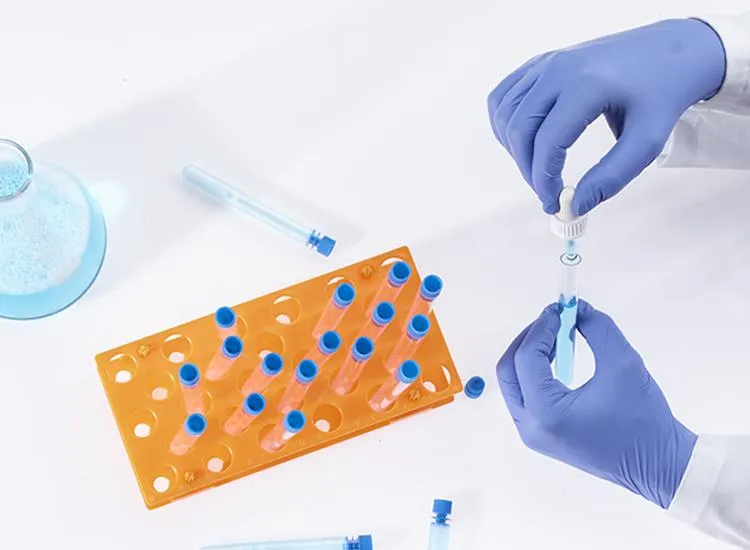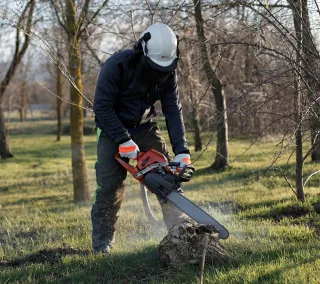Novelty
K-ROCK+: CUTTING PROTECTION GLOVES WITH MAXIMUM GRIP AND COMFORT
In its commitment to quality and innovation, Juba has just launched K-Rock+, a revolutionary technology in cut protection gloves that redefines comfort and safety at work. Ergonomically designed, these gloves enable superior dexterity, optimising every movement and facilitating the most precise tasks.
Advanced technology without fibreglass or steel wire
K-Rock+ stands out for its focus on the user's health, eliminating the use of fibreglass and steel threads in its composition, minimising the risk of skin irritation. Thanks to their composite fibre and reinforced nitrile coating between the thumb and forefinger, these gloves offer excellent wear resistance in areas of heavy use, increasing their durability and performance.
Thin gauges for ergonomic design and unrivalled comfort
Aimed at professionals who handle small and sharp objects, K-Rock+ gloves have been developed to meet the highest demands of the market. Their thin gauges provide a unique feel and sensitivity, guaranteeing softness and comfort throughout the working day, regardless of the duration of the task.
Comfort, breathability and touchscreen compatibility
In addition to their ergonomic design, K-Rock+ gloves are breathable and compatible with touch screens of industrial machines and smartphones, making it easy to interact in the work environment without having to take them off. Available in sizes ranging from 6 to 11, these gloves are perfectly adapted to each user.
Certified to EN388:2016 standard for Protection against mechanical hazards
In a work environment with cutting hazards, protecting your hands is essential. Cut protection gloves, such as K-Rock+, are designed with materials that offer effective defence against accidental cuts and comply with EN388:2016, which certifies their resistance to abrasion, cutting, tearing and puncturing. This standard includes demanding test methods and performance evaluations, providing clear guidance for choosing the most suitable glove depending on the risk.
EN388:2016 test methods: A guide to proper protection
K-Rock+ gloves have undergone rigorous testing in accordance with EN388:2016. These tests determine cut resistance and classify materials into performance levels, helping to select the most appropriate protection for each task. Specifically, these tests use a blade that applies a force to the sample, classifying resistance in levels from A to F.
Properties of K-Rock+
In addition to all these advantages, the following features of each model stand out:
KPPU4418 POWER CUT, an 18 gauge glove made of nylon and spandex backing with polyurethane coating so it offers great ergonomics, lightness and breathability. The glove offers users good grip on dry, slightly damp or oily surfaces. The gloves will resist contact heat at level 1 (100ºC for 15 seconds) and will resist abrasion, so they are highly durable.
These gloves are recommended for jobs such as aeronautics and renewable energies, assembly lines, mould injection, automotive, metal parts handling and warehouses.
KPNI4421 POWER CUT, a nylon and spandex glove with micro foam nitrile coating. Thanks to a 21 gauge, this glove is very flexible, light and precise, which provides great dexterity to the user.
This reference by Juba offers excellent performance for work with small, sharp objects such as metal bending; stamping; work related to metal parts and metal assembly (manufacturing of capital goods, automotive, aeronautics); in the manufacture of metal packaging, moulds and dies; machining and fitting, work with metal profiles or strips; the paper industry or, of course, any maintenance work.
KPNI4418 POWER CUT, a nylon and spandex glove with nitrile foam coating. Thanks to its 18 gauge, this glove offers great ergonomics, lightness and breathability. The glove provides the wearer with good grip on dry, slightly damp or oily surfaces. The glove will resist contact heat level 1 (100ºC for 15 seconds) and will resist abrasion, so they are highly durable.
These gloves are recommended for work in assembly and assembly of metal parts, metal processing, installations and maintenance, automotive, aeronautical assembly and maintenance, injection and demoulding of plastics, glass handling.
KPNI4515 POWER CUT, a glove with nylon and elastane coated with nitrile foam. Thanks to a 15 gauge this glove provides excellent abrasion resistance for increased durability. In addition, the glove will resist contact heat up to 100°C for 15 seconds and will resist abrasion.
These gloves are recommended for work in assembly and assembly of metal parts, logistics, metal processing, installations and maintenance, automotive, aeronautics assembly and maintenance, plastic injection and demoulding, glass handling.
KPNI4415HC POWER CUT with double nitrile coating on half back and KPNI4415FC POWER CUT with full coating.
A waterproof reference in the covered areas made of seamless nylon and elastane with double nitrile coating. Specifically, the first layer has waterproof nitrile and the outer layer has sandy nitrile for better grip in oily or greasy environments. With a 15 gauge, these references offer excellent resistance against abrasion for increased durability, in addition to being flexible and comfortable, with a high level of protection against cuts and resistance against contact heat of 100ºC for 15 seconds.
These gloves are recommended for jobs related to automotive, assembly, machinery operations, maintenance, logistics and warehousing, outdoor work.
Conclusion: Indispensable protection in high-risk industries
In industrial sectors where there is a risk of cuts, selecting certified cut-resistant gloves such as Juba's K-Rock+ gloves is an essential action to ensure safety at work. These gloves not only meet the most rigorous standards, but also offer exceptional comfort and functionality, adapting to the needs of each professional.
Juba, once again, makes the difference in the protection of professionals, combining technology and design to offer the best experience in cut protection gloves. Discover the new K-Rock+ range and take your safety to the next level!
12 September 2024
Read more









